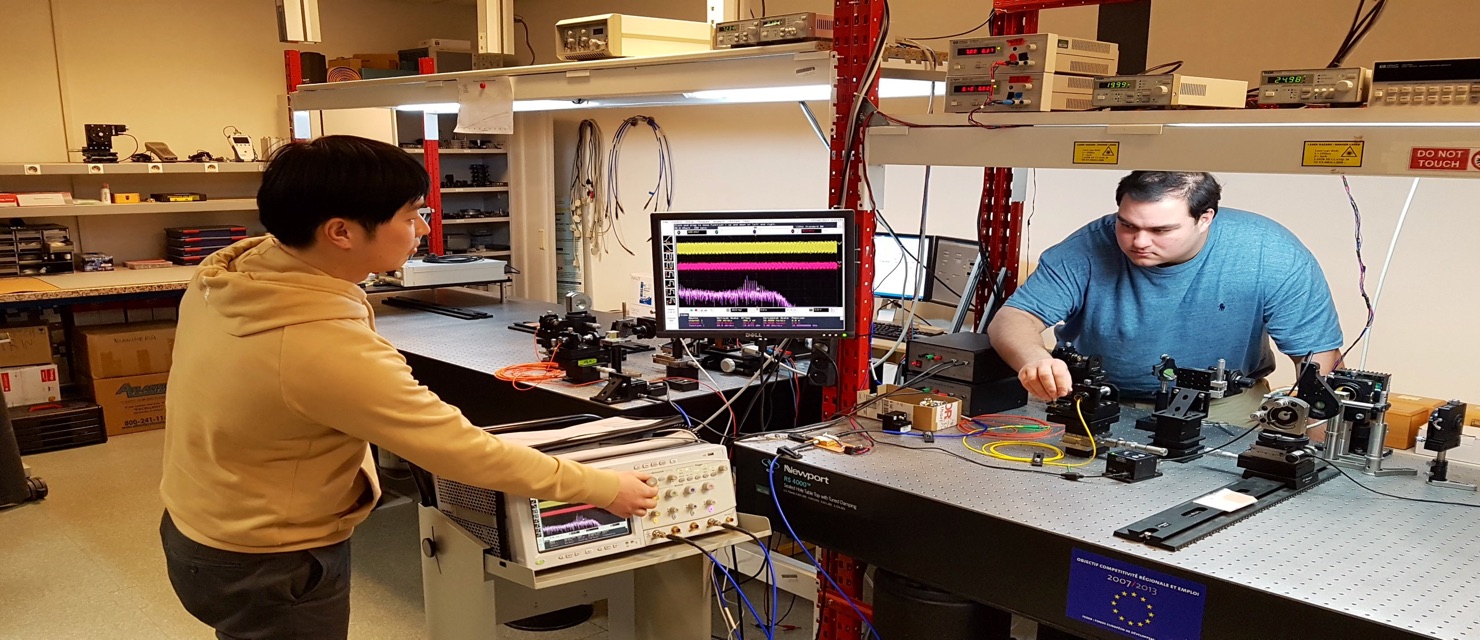Engineering has been traditionally dominated by linear systems mainly because of their simplicity and predictability. Awareness is growing that nonlinear systems and their associated nonlinearity underlies a plethora of physical, biological, and social phenomena and can be useful in building systems that provide superior flexibility compared to purely linear systems. Indeed, nonlinear systems can perform more complex operations than linear ones; this means that they are able to implement at the hardware level many of the operations that are typically devoted to offline post-processing in linear systems.
Photonic devices are especially interesting for the study of nonlinear dynamical phenomenon, both because of their inherent speed, which makes them prone to higher frequency applications than what electronic systems can achieve and because of their flexibility, which makes it possible to make fundamental investigations of their sub-ns dynamics. We use mostly external-cavity lasers (ECLs) as a a prototype for high-speed (sub-nanosecond) chaos in high-dimensional time-delayed dynamical systems. ECLs use an external cavity to provide time-delayed optical feedback into the laser diode (LD), and lead to a variety of dynamical behaviors depending on the operating and device parameters. ECLs typically serve as a prototype for high-speed (sub-nanosecond) chaos in high-dimensional time-delayed dynamical systems. Due to the peculiarities of the delayed feedback, an infinite-dimensional dynamical system results in which hundreds of attractors or attractor ruins can co-exist in the same region of phase space, a phenomenon known as generalized multistability and leading to a wealth of dynamical regimes of varying complexity. Their highly complex dynamics further makes them attractive for applications such as secure communications, high-speed random-number generation, and neuromorphic computing.
We have developed a state-of-the art experimental facility to study the sub-ns dynamics of diode lasers. We are able to resolve systematically the bifurcation mechanisms that lead to the various dynamical regimes used in applications [17_PRA],[15_PRA], [15_OE]. In addition, we have studied experimentally several applications of these dynamical regimes. In particular, chaotic regime have been exploited for high-speed random bit generation [14_OE], for securing communications [15_OL] and for compressive sensing [17_SRep]; the periodic regime has been exploited in the study of an optoelectronic oscillator [16_APL] and in reservoir computing, while the sensitivity of a CW laser to feedback has allowed to get rid of the photodiode in a CD/DVD reader.

- Log in to post comments
